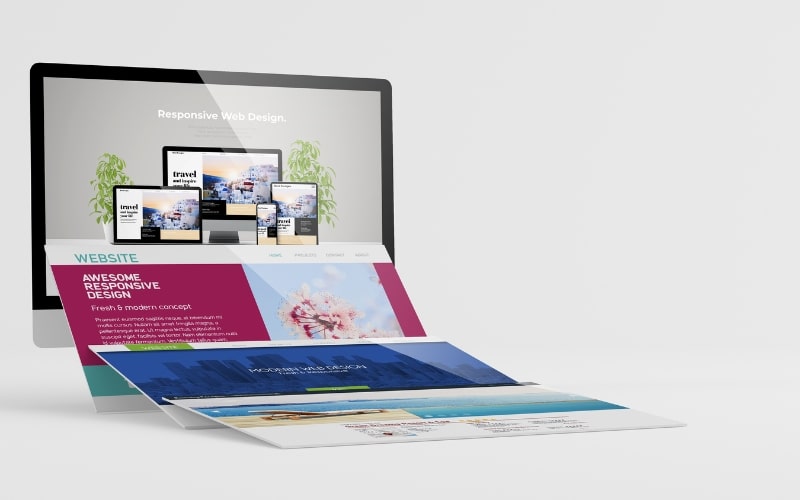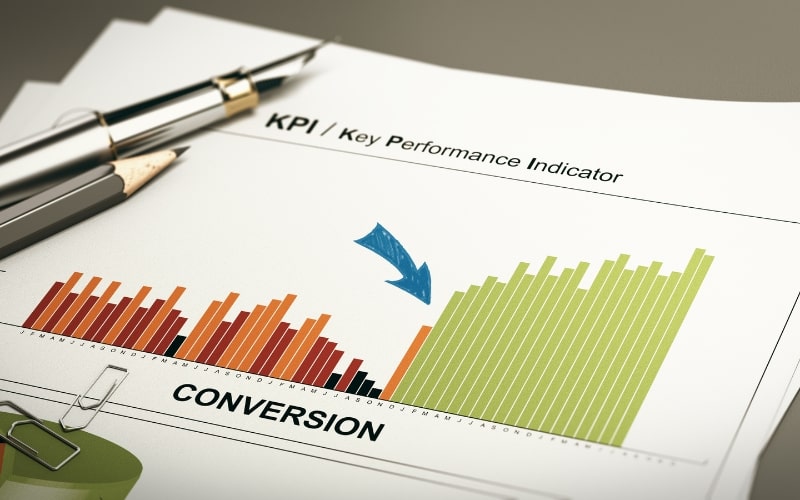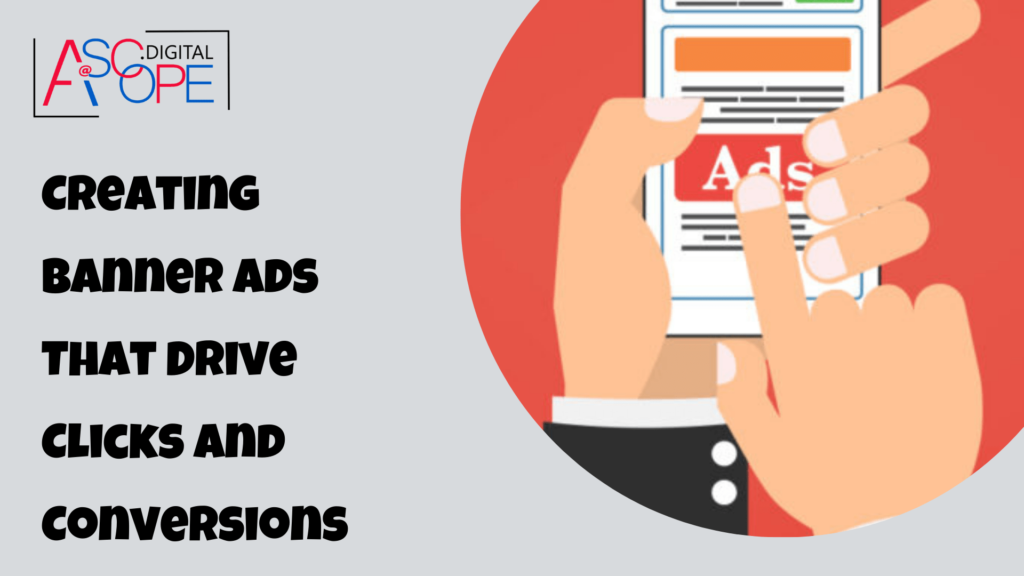Banner ads are a staple in digital marketing, providing businesses with a visual medium to attract and engage potential customers. However, the effectiveness of banner ads hinges on their design, placement, and overall strategy. In this comprehensive guide, we’ll explore the essential elements of creating banner ads that not only capture attention but also drive clicks and conversions.
Understanding Banner Ads

What Are Banner Ads? Banner ads are graphical advertisements displayed on web pages. They come in various sizes and formats, including static images, animated GIFs, and interactive rich media. The primary goal of banner ads is to prompt users to click on them, leading to a landing page where further engagement and conversions can occur.
Types of Banner Ads
- Static Banner Ads: Simple images with minimal text.
- Animated Banner Ads: Use animation to attract attention.
- Interactive Banner Ads: Engage users with interactive elements.
- Rich Media Banner Ads: Combine animation, video, and interactivity.
Key Elements of Effective Banner Ads
1. Compelling Visuals The visual aspect of a banner ad is crucial. High-quality images, graphics, and animations can draw users’ attention. Ensure that visuals are relevant to the product or service being advertised and are visually appealing.
2. Clear and Concise Messaging The message should be clear, concise, and compelling. Use a strong headline to grab attention and a brief, persuasive message to convey the value proposition. Avoid clutter and keep text minimal.
3. Strong Call-to-Action (CTA) A strong CTA is essential for driving clicks. Use action-oriented language like “Buy Now,” “Learn More,” or “Sign Up Today.” The CTA button should stand out with contrasting colors and be positioned prominently within the ad.
4. Brand Consistency Ensure that the ad is consistent with your brand’s identity. Use your brand’s colors, fonts, and logo. This not only builds brand recognition but also instills trust in the viewer.
5. Appropriate Size and Format Banner ads come in various sizes, such as leaderboard (728×90), skyscraper (160×600), and medium rectangle (300×250). Choose the size and format that best fits the placement on the website and your campaign goals.
Designing for Clicks and Conversions

1. Focus on Target Audience Understanding your target audience is the first step. Tailor your ad design and message to resonate with the audience’s preferences and pain points. Use language and visuals that appeal directly to them.
2. A/B Testing A/B testing involves creating multiple versions of a banner ad and testing them to see which performs better. Test different visuals, headlines, CTAs, and formats. Use the data to optimize your ads for better performance.
3. Placement Matters The placement of banner ads on a webpage significantly affects their performance. Ads placed above the fold (visible without scrolling) typically perform better. Also, consider the context of the webpage and ensure the ad is relevant to the content.
4. Mobile Optimization With the increasing use of mobile devices, it’s crucial to optimize banner ads for mobile viewing. Ensure that the ad is responsive and looks good on various screen sizes. Use shorter text and larger buttons for better readability and interaction on mobile devices.
Advanced Strategies for Enhanced Performance
1. Retargeting Retargeting involves showing ads to users who have previously visited your website or interacted with your brand. These users are more likely to convert, making retargeting a highly effective strategy. Use dynamic ads that change content based on the user’s past behavior.
2. Personalized Ads Personalization can significantly increase the effectiveness of banner ads. Use data such as user location, browsing history, and demographic information to create personalized ad experiences. Personalized ads are more relevant to users and can drive higher engagement.
3. Dynamic Creative Optimization (DCO) DCO is a technology that automatically tailors banner ad content based on user data. It can dynamically change elements like images, text, and CTAs to create highly relevant ads for each user. This can improve click-through rates and conversions.
Common Mistakes to Avoid
1. Overloading with Information Too much information can overwhelm the viewer and dilute the main message. Keep the ad simple and focus on one key message.
2. Poor Quality Visuals Low-quality images or graphics can negatively impact the perception of your brand. Always use high-resolution visuals and professional design elements.
3. Weak CTA A vague or weak CTA can result in low click-through rates. Make sure the CTA is clear, compelling, and action-oriented.
4. Ignoring Analytics Without tracking and analyzing performance data, it’s impossible to know what’s working and what’s not. Use analytics to monitor the performance of your banner ads and make data-driven decisions to improve them.
Tools and Resources
1. Design Tools
- Adobe Creative Cloud: A suite of design tools including Photoshop and Illustrator for creating high-quality visuals.
- Canva: A user-friendly design tool with templates for banner ads.
- Sketch: A design tool focused on digital interfaces and user experiences.
2. Analytics Tools
- Google Analytics: Track the performance of your ads and analyze user behavior.
- AdRoll: A platform for retargeting and performance analysis.
- Hotjar: Provides heatmaps and session recordings to understand user interactions with your ads.
3. Ad Networks and Platforms
- Google Display Network (GDN): One of the largest ad networks, reaching a vast audience.
- Facebook Ads: Offers highly targeted ad placements on Facebook and Instagram.
- AdRoll: Specializes in retargeting across multiple platforms.
Case Studies and Examples
1. Successful Banner Ad Campaigns
- Coca-Cola’s “Share a Coke” Campaign: Personalized banner ads featuring user names led to high engagement and conversions.
- Nike’s Dynamic Product Ads: Using DCO, Nike created personalized ads based on user behavior, resulting in increased click-through rates.
2. Lessons from Failed Campaigns
- Overly Complex Ads: Some campaigns failed due to overly complex designs that confused users. Simplicity and clarity are key.
- Poor Targeting: Ads that were not properly targeted resulted in low engagement. Accurate targeting is essential for success.
Future Trends in Banner Ad Design
1. Augmented Reality (AR) Ads AR technology is being integrated into banner ads to create immersive and interactive experiences. These ads allow users to interact with products in a virtual space, enhancing engagement.
2. Video Integration The use of short video clips within banner ads is increasing. Videos can convey more information and capture attention more effectively than static images.
3. Artificial Intelligence (AI) AI is being used to optimize ad placements, personalize content, and analyze performance. AI-driven ad design and targeting can significantly improve the effectiveness of banner ads.
Mastering Banner Ads: Techniques to Drive Clicks and Boost Conversions
Creating banner ads that drive clicks and conversions is essential for enhancing your website’s traffic and sales. Well-designed banner ads not only attract attention but also engage potential customers, leading to higher click-through rates. To achieve this, it’s crucial to focus on compelling visuals, clear messaging, and strategic placement. Incorporating strong calls-to-action and targeting the right audience can significantly improve ad performance. Thus, improving traffic and sales for your website. Read more on the other reasons why your website isn’t getting traffic. By analyzing and optimizing your banner ads, you can identify what resonates with your audience and make necessary adjustments to maximize effectiveness. Regularly testing different designs and messages will also help in finding the most successful combinations, ensuring your banner ads continually drive clicks and conversions.
Conclusion
Creating banner ads that drive clicks and conversions requires a combination of compelling visuals, clear messaging, strong CTAs, and strategic placement. By understanding your target audience, leveraging advanced strategies like retargeting and personalization, and avoiding common mistakes, you can design banner ads that not only capture attention but also drive meaningful engagement and conversions. Stay updated with the latest trends and continuously optimize your ads based on performance data to achieve the best results


